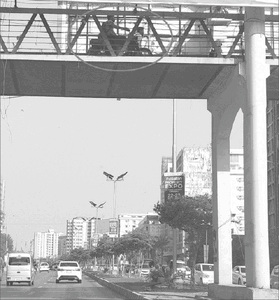THE health-for-all initiative in the country seems to be moving along nicely and Pakistan is expected to join the list of 32 countries that offer umbrella health coverage to their citizens. Offering healthcare to its citizens is vital for a country to enjoy a respectable status in the global health community. But the future of the medical profession in Pakistan may be very different from the rest of the world as we proceed on this path.
According to the Institute for Health Metrics and Evaluation, the per capita health spending in the United States is $9,237, while it is $3,247 in the United Kingdom and $2,000 in Canada. There are three types of universal healthcare systems in the world: single-payer system, socialised medicine, and private healthcare system.
The single-payer system is prevalent in Canada, Germany and Taiwan. In this system, the government and private hospitals both play important roles. Doctors are mostly salaried. Nearly 30 per cent of the hospitals are private and are owned by big organisations, while 70pc are government hospitals. Both doctors and patients stand to benefit from the system as it is a true model for the citizens, with less liability on the government. The only issue with this model is the long waiting time for patients.
The socialised medicine model is found in the United Kingdom. It does not benefit the doctors much, but the government covers the population with fewer expenses and in ways that are often inefficient. The private healthcare system is present in the US and Switzerland. It is the most expensive of the three broad healthcare systems.
In Pakistan, the State Life Insurance Corporation (SLIC) is being tasked to run the universal health coverage initiative, and it is likely to make the programme successful.
The Sehat Sahulat Programme (SSP) was launched in Layyah with the first phase of population coverage in Punjab. A far-flung area like Layyah in southern Punjab, with a population of 2.4 million, is a perfect choice as there are no appropriate health facilities at the government-run hospitals.
While the SSP plays a significant role in providing healthcare to the poor, it may create a tough situation for the doctors and private healthcare setups. The government must strike a balanced equation involving private hospitals, doctors and patients. It should listen to the consultants and doctors as well.
When the Pakistan Medical Commission (PMC) announced a licensing exam for all medical graduates, it was clear that the universal healthcare system will be implemented at any cost. Punjab aims at bringing its entire population under the SSP umbrella by the end of this year. Subsequently, there will be a significant shift of patients towards private healthcare setups because of higher satisfaction rates.
Private hospitals would become contractors who will subsequently bill the government. On its part, the government will probably launch some land and tax exemption schemes for the private-sector facilities, but only the time will decide the future of doctors and healthcare delivery system in the country.
Doctors need to be very careful in deciding their future as there will be multiple barriers in their way to post-graduation and how much they will get paid after securing one of the most difficult academic qualifications in the world.
Every doctor must be a part of this system for the sake of his/her practice. It will be a bread-and-butter affair for them. They must be salaried for the survival of their clinical practice. They should understand that there will be authentic bodies for checks and balances.
The future of healthcare and medical profession is likely to undergo a major change in Pakistan. Everyone with a family will have to get health insurance via government channels or private health insurance providers assigned by the government. The government departments will be instructed to get their employees and their families insured. A sizeable chunk of the corporate sector is already providing health insurance to its employees while deducting a certain amount from their salaries.
Only the poor population, which lives below the poverty line, will enjoy completely free-of-cost healthcare. But here is the big question: how will the country achieve its goal when 40pc of its population lives below the poverty line, and only 1.2pc of the GDP is spent on health for a population of 225 million?
Dr Ali Yahya
Layyah
Published in Dawn, September 16th, 2021


































